Text
Authenticity & The Core of Heritage Tourism
After reading this week’s articles, it is evident that heritage tourism is used as a tool by local governments and private businesses to enhance community economic development.
In the first article by Chhabra et al., (2003), heritage tourism is recognized as an economic activity to attract visitors to a destination. The second article by Poria et al., points out that people don’t just visit a place to “gaze”, be educated, and enjoy themselves; they crave a deeper emotional experience. They come to “feel” rather than to “gaze.”
Referring back to the first article (Chharbra et al, 2003), this sense of “feel” can be tied in with a desire for heritage tourism, resulting from nostalgic elements from the past and the yearning to experience diverse cultural events and landscapes.
One important attribute of heritage tourism is authenticity, or at least the perception of it.
The section in the Chharbra et al., (2003) article on p704 mentioning;
“….products of tourism such as festivals, rituals, dress are described as authentic or inauthentic depending upon whether they are made or enacted by local people according to tradition” pulled my attention as I thought about The Bahamas tapping into heritage tourism by introducing the first Bahamas Carnival next year May with the hopes of attracting global visitors to partake in this event. Carnival is not at all traditional to The Bahamas, as more emphasis is placed on Junkanoo; a deeply rooted African influenced festival held annually during Boxing Day & New Years.
Although Carnival is not a culturally authentic event to The Bahamas, efforts are being made to make it a new truly unique Bahamian festival that is appealing to the younger generation. In my opinion, the problem with Junkanoo is that it is extremely traditional and not as enjoyable to partake in as much as Carnival.
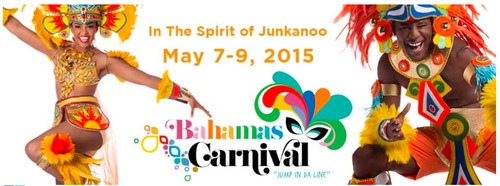
Another point I agree with by Chharbra et al., (2003) is that an authentic experience includes participation in a collective ritual, where strangers get together in a cultural event to share a feeling of closeness and unity.
This cultural event is not a complete re-creation of the past, but instead nostalgic representations of the past are portrayed in a way to suit the needs of present society. In the reading by Poria et al., (2003), it is also observed that we can never experience the authentic. What we encounter are reminders of past experiences, rather than the experience itself.
I think it is important to have certain touch points to remind ourselves about how things were in the past, trust me, I love history. However, I firmly believe that culture is a revolving process. It does not remain stagnant. Based on this personal belief, heritage tourism can be created and re-created from existing memories and artifacts of the past to meet current demands. Not every aspect of the experience needs to be authentic, especially when mixed together, the combined elements produce the desired nostalgic feelings that people crave (Chharbra et al., 2003).
0 notes
Link
Hey Keisha, you made some good points here! Its so important for hotels in Barbados to no only recognize that they should use social media simply because their competitors are using it, but their main reason should be to promote the unique features of their organisations and to expand their market share. If some hotels are saying they only use social media because their competitors are, I believe they will be missing out on their slice of the pie.
Taking my research a bit further than Barbados, it was shown that the hotels in Barbados have barely gotten their feet wet when it comes to utilizing social media for business. The hotels on the island said they were using these platforms because: “that’s what my competition is using”, “it keeps...
3 notes
·
View notes
Photo
Hey Nicole, I liked reading this post and I also agree that publicists no longer control the reputation of a restaurant and that it falls into the hands of customers. What are some techniques restauranteurs can use via social media to effectively gain more popularity among customers?

Social Media in the Restaurant Industry
According to TripAdvisor (2014) Champers is ranked #1 of the 123 Restaurants in Christ Church Parish, receiving a certificate of Excellence in 2014. In areas of food, service, value and atmosphere they have received ratings past 80%. Traditionally customers relied on the business to provide the information, which they would selectively put forth. However, now with websites like TripAdvisor and Yelp more people are relying on other customer experiences to assist in the decision making process.
Reviews from TripAdvisor (2014)
“great food!, better ambiance!" - 6 helpful votes
“worth the experience" - 29 helpful votes
“fantastic!" - 3 helpful votes
“wonderful evening from Start to Finish" - 4 helpful votes
“what a brilliant setting a place to eat…" - 24 helpful votes
Champers like other restaurants in the hospitality industry, relies heavily on reviews and recommendations, the social media usage has empowered customers making them a “well-acclaimed critics”. Social media has given consumers the power to spread information to thousands of people in a matter of seconds via Instagram, Tumblr, Facebook and other social sharing platforms. It appears that a publicists no longer controls the reputation of a restaurant; customers are. Champers Restaurant due to the shift towards social sharing has become more proactive since 2012 in protecting their reputation.

7 notes
·
View notes
Link
Hi Mersedeh, i enjoyed reading your post. Having interactive social media platforms like the Barbados app you mentioned, should definitely be clearly visible on Barbados' main website. Keeping up with technology advancements is a must for tourism destinations. However, poor communication with these advancements can hamper a destination in achieving competitive advantage. What's the sense of creating these developments in technology if not many people know about it? I wonder what other kind of apps or social networks are out there for Barbados that we don't know about. The way social media works is that information comes to us, we don't necessarily have to spend so much time looking for it.
I decided to assess the role of social media in Barbados based on how affluent travelers (those with income of two hundred and fifty thousand US dollars or more annually, who travel once or twice a year at minimum) use social media in their travel decisions and when they arrive at the destination....
7 notes
·
View notes
Link
Hey Keisha, you made some good points here! Its so important for hotels in Barbados to no only recognize that they should use social media simply because their competitors are using it, but their main reason should be to promote the unique features of their organisations and to expand their market share. If some hotels are saying they only use social media because their competitors are, I believe they will be missing out on their slice of the pie.
Taking my research a bit further than Barbados, it was shown that the hotels in Barbados have barely gotten their feet wet when it comes to utilizing social media for business. The hotels on the island said they were using these platforms because: “that’s what my competition is using”, “it keeps...
3 notes
·
View notes
Link
Thanks Keisha, its so true!
Based on a survey conducted among 28 participants consisting of university students, and tertiary industry workers who use social media and reside in the US, Canada, and The Bahamas. Social media plays a strong role in the influencing travelers decision-making cycle about Barbados. The frequency…
3 notes
·
View notes
Text
The Influence of Social Media on Traveler Decisions About Barbados: Research Report Survey Results Analysis Key Points
Based on a survey conducted among 28 participants consisting of university students, and tertiary industry workers who use social media and reside in the US, Canada, and The Bahamas. Social media plays a strong role in the influencing travelers decision-making cycle about Barbados. The frequency tables below show the results of some of the key questions asked in the survey.
Table 1: Question 5- I enjoy viewing status updates, pictures and videos on social networks about trips made by my friends and family.
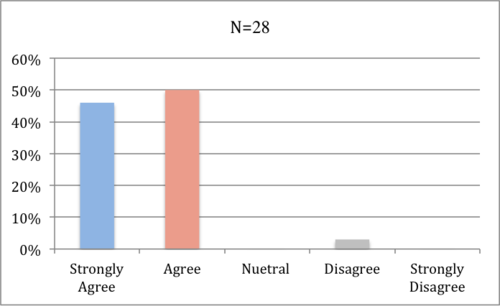
The results indicate that 46% of respondents strongly agreed, whereas 50% agreed with this statement. Evidently, social media users enjoy viewing content from their peers, and can get inspired to visit a destination based on the enjoyable experiences they encounter from viewing shared content from their friends and family about a destination.
Table 2: Question 6- What are the chances of you trusting peer recommendations about Barbados Tourism?

It comes to no surprise that 70% of the respondents indicated there is a very good chance of them trusting peer recommendations about Barbados, whereas 25% mentioned only some chance.
Table 3: Question 7- How likely are you to trust general marketing advertisements about Barbados?
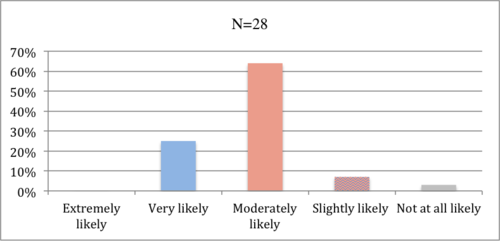
Out of the 28 participants, 64% were moderately likely, 25% were very likely and 7% were slightly likely to trust general promotions about Barbados.
According to these results, it is evident that travelers care more about how their social groups rate and promote tourism in Barbados as opposed to general advertisements from destination organisations. As social media has a strong influence on traveler decisions about Barbados, tourism stakeholders in the country should develop effective social media strategies, as there are groups of travelers who will be more responsive to marketing engagement activities on social media platforms.
3 notes
·
View notes
Link
Hey Nicole, I agree that publicists no longer control the reputation of a restaurant and that it falls into the hands of customers. What are some techniques restauranteurs can use via social media to effectively gain more popularity among customers?
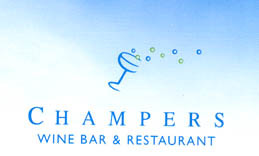
According to TripAdvisor (2014) Champers is ranked #1 of the 123 Restaurants in Christ Church Parish, receiving a certificate of Excellence in 2014. In areas of food, service, value and atmosphere they have received ratings past 80%. Traditionally customers relied on the business to provide...
4 notes
·
View notes
Text
The Influence of Social Media on Traveler Decisions: Research Paper Literature Review Key Points
Social media plays a critical role in the traveller decision cycle. Using the standard consumer decision-making cycle by Kotler (1991), social media can enhance the experience for travelers.
Need recognition: Travellers recognize the need to travel triggered by internal motives or external factors like viewing promotional or user generated content on social media.
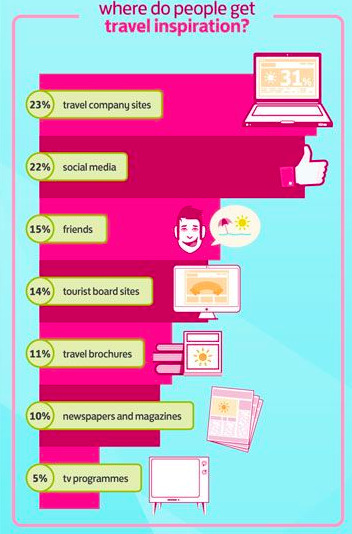
Information search: Travellers search on social media sites to choose a destination that will suit their needs and characteristics. E.g. PixMeAway.com, where travellers are matched with destinations to suit their preferences.
Evaluation of Alternatives: In this stage, travelers decide on accommodation, forms of transportation and take peer recommendations into consideration on social media sites such as Facebook, Twitter and Tripadvisor.
Choice of product or service: Travelers are about to start their trip or have already started it in this stage. They also make searches about location criteria for places and restaurants to visit in a destination. They are also likely to share experiences of their trip with their peers while traveling on social media platforms like Snapchat and Instagram.

Post purchase evaluation: Travelers have completed their trips and may blog about their overall experiences online. Satisfied travelers pass on positive word of mouth, whereas unsatisfied travelers pass on negative word of mouth electronically. This influences potential new travelers as the cycle repeats itself.
Based on the video below, social media is not a fad, it is a fundamental shift in the way we communicate as individuals.
https://www.youtube.com/watch?v=0eUeL3n7fDs
References:
Glenn, D." Has Social Media Killed the Postcard?" Social Times. 2013. (Accessed October 26, 2014) http://socialtimes.com/has-social-media-killed-the-postcard-infographic_b124301
Kotler, P. Marketing Management: Analysis, Planning, and Control . Vol. 8. Prentice Hall Inc. , 1991.
Qualman, E. "The Social Media Revolution." Youtube video, 4:25. October 23, 2011. (Accessed October 26, 2014) https://www.youtube.com/watch?v=0eUeL3n7fDs
1 note
·
View note
Link
Professor Jönsson, I appreciate your thorough comment. One thing I admire about tourism is that it is one of the fastest growing industries. It has a resilient nature unlike any other industry. In class last week, Mersedeh made reference to the article pointing out some destinations who are truly affected by climate change, market themselves in a way to encourage tourists to visit before the environment gets completely depleted. Also, in the video we see how a coastline sea wall was built in Barbados to combat coastal erosion and created a place for people to go walking. It also enhanced the ambiance of restaurants in the area. I suppose examples like these indicate how the tourism industry can adapt to issues brought on by climate change. In other words, turn the negatives into positives.
Based on this week’s reading by Amelung (2007), climate change is now seen as a critical social and environmental issue facing the global population and its resources. Events such as the European heat waves of 1998 and 2003, the increased incidences of wild fires across the Mediterranean, the…
3 notes
·
View notes
Text
Week 4: Tourism & Climate Change
Based on this week’s reading by Amelung (2007), climate change is now seen as a critical social and environmental issue facing the global population and its resources. Events such as the European heat waves of 1998 and 2003, the increased incidences of wild fires across the Mediterranean, the recent increase of intense hurricanes across the US and the Caribbean, as well as droughts and sea level rises have sparked an interest among the public to pay more attention to the issues of climate change.
Although, none of these events are proved to be the direct outcome of climate change, their occurrence and their impacts on both locals and temporary visitors creates an urgency to develop strategies to deal with climate change.
Weather and climate can act as push and pull factors for travellers. For example, additional research discovered that there is a strong relationship between the weather in the UK and the tendency of the British to travel abroad (Giles & Perry, 1988). Although climate is not a tourist attraction, it is an influencing factor of tourist’s travel activities.
Seasonality embodies the natural factors that relate to a destination’s climate. These include annual differences in variables such as temperature, precipitation, wind speed, humidity and snow depth. These can also include social customs like religious (e.g. Christmas and Easter), school, agricultural and industrial festivities and holidays.
Economically, seasonality and the fluctuations between the under and over capacity it generates can negatively affect profits, the attraction of investment capital, and employment.
Environmentally, the peak season concentration of visitors can place a substantial strain on the local environment with challenges in water supply, trash disposal, congestion and erosion. Similarly, local people may also be disadvantaged by seasonal strains on community services and infrastructure.
To tie in with this week’s article, I stumbled across a video showing how the threat of climate change can have negative impacts on the tourism industry in the Caribbean. The video also highlights ways Caribbean countries like Barbados, Belize, St. Lucia, Jamaica and Antigua are developing new strategies to combat the challenges of climate change. I know it’s a bit lengthy, but I thought it raised some really interesting points. Have a watch and let me know your thoughts. Enjoy! :-)
P.S., in my opinion, it seems as though climate change has brought on many negative consequences, do you think there might be any positive results of climate change in the tourism industry?
https://www.youtube.com/watch?v=ak7cVJ9SXbk
3 notes
·
View notes
Text
Tourism Risk Management
Based on this week’s lecture, we observed that safety, health, and security are main threats to tourists. Crisis events can occur around these main three areas and each of them has a strong impact on tourism.
Safety issues can range anywhere from using precautions to ensure that people feel safe in a certain environment if something unexpected happens. This can include being in an area with proper evacuation signage and proper spatial orientations to ensure people can get in and out an area smoothly in an emergency.
Health related issues such as epidemics can occur in a destination preventing tourists from visiting. It can also work in an opposite way, whereas people with certain medical issues have to travel to other countries to seek special medical care or treatment. Based on these two reasons, there can be a positive and negative effect on tourism. As it relates to security in my opinion, these can include elements that the public is aware of. These consist of informing locals and tourists in an area of certain rules and policies to protect them from any harm. It also involves having personnel present in areas to respond quickly to a risk or crisis if it does occur unexpectedly.
A risk is a chance of something taking place that will have an impact on certain objectives. Following a risk leads to a crisis, which is a situation that has the capability to affect long - term confidence in an organization or a product. It can also affect its potential to continue operating normally. If a crisis is not resolved, it can evolve into a disaster. Disasters can be defined as a catastrophic event that severely disrupts the life of a community and needs the assistance of local government to help the community get back to normal.
In the reading by Hall, (2010) he mentions that some crisis events can actually enhance tourism such as the 9/11 memorial site in which people want to visit.
One key issue associated with this area for me is that in the tourism industry it is often difficult to combine good quality hospitality service with strict safety rules and practices during travel. Stakeholders should come up with strategies to be able to implement safety procedures while at the same time providing quality hospitality services.
2 notes
·
View notes
Link
West Africa Ebola crisis hits tourism, compounds hunger in Gambia
DAKAR (Thomson Reuters Foundation) – Pestilence, cyclical droughts and floods, and the West Africa Ebola crisis have pushed hunger to record levels in Gambia, where 200,000 people need urgent food assistance, the United...
1 note
·
View note
Link
Hi Keisha, I like how you explained mass and alternative tourism separately. To reply to your question regarding the combination of both, I think it is possible but it might be a challenging process. Both aspects have such different motives and characteristics as you mentioned. I think it might be easier to combine from a tourist perspective.
Say for example, I visit Italy to frequent in activities alternative tourists engage in and I also may have the desire to add one or two possible mass activities to my itinerary such as visiting a popular beach. However, from a tourism planning perspective for stakeholders, I think it would be easier to separate the two so that they can focus on appealing to each specific market during a particular season.
When you hear mass you automatically think “BIG”, you assume a large number or a grand amount, however alternative speaks for itself- “the other option.”
Mass tourism is a form of tourism that involves thousands of people visiting the same destination at the same time all year round. It is the...
3 notes
·
View notes
Text
Post 1: Mass Tourism vs. Alternative Tourism
Today, tourism can be classified as one of the most essential industries in the global economy (Trunfio, 2006). For this post, I explored two areas which include mass tourism and alternative tourism related to this week’s readings, additional sources in the subject area, and an in class documentary.
Mass tourism
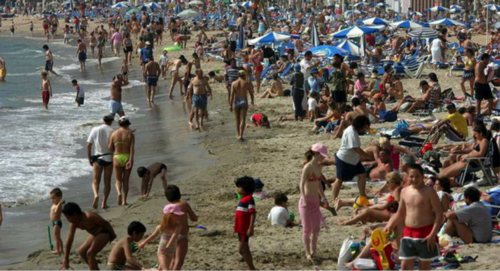
Mass tourism can be described as a form of tourism that involves a large number of people visiting a certain place during the same time of the year. Some components of mass tourism include; large scale accommodations, attractions that appeal mostly to all foreign tourists and limited lack of local involvement (Weaver, 1995).
In the reading by Weaver (1995), he argues that mass tourism is simply another way in which the developed world imposes control over the undeveloped world.
Despite the way it is marketed, tourism, especially in the Caribbean can be viewed as a modern day exploitative plantation system, as it is often compared to the sugar plantations that existed throughout the past colonial period in the region.
Both sugar and tourism require Caribbean societies to arrange themselves to meet the needs of more powerful outside groups of people. The only difference is that the sugar plantation created a tangible commodity which was shipped away for consumption. Tourism however, is an industry that creates a pleasurable intangible product based on experiences consumed on the spot by temporary residents flown in from abroad. (Ford-Smith, 1995)
Concerns of sustaining the environment and communities often take a back seat, as the goal of increasing profits is top priority for foreign mass tourism hotel investors. Tour operators also have a role to play in mass tourism. They provide information to potential visitors, create and advertise destination packages, determine market trends, the prosperity of destinations and suppliers and influence the demand levels for destinations (Trunfio, 2006).
These are all beneficial points, however do tour operators really keep in mind the concerns of the environment and local communities of the destinations they promote? Not exactly. According to Trunfio (2006), some of their strategies can actually have a negative impact on some destinations.
Similar to foreign resort owners, tour operators are mainly focused on their own survival and growth. Nonetheless, the holistic destination image is not even directly related to the tour operator’s promotional strategies (Trunfio, 2006.) Their plans are geared more towards promoting their own brand image rather than the destination itself.
Additionally, the destination life-cycle is increased by the plans of tour operators. For tour operators to obtain their main objective in increasing the amount of tourists staying at a resort, they obtain tourists using economies of scale by stimulating rapid and irrational development without consideration for the environment or any chance for local people to have influence over the rate of that development. (Trunfio, 2006)
Now that we have some insight into mass tourism and its components, let’s take a deeper dive into alternative tourism.
Alternative Tourism
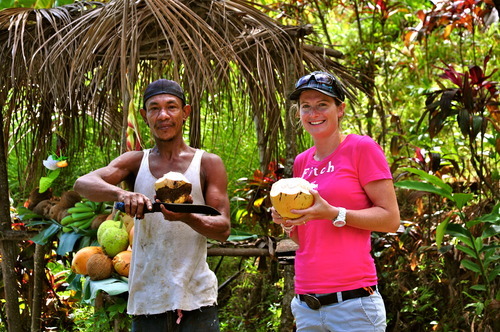
Weaver (1991) describes alternative tourism as an ambiguous concept, however it can be understood by observing generic terms of its components which include “appropriate”, “eco”, “soft”, “responsible”, “people to people”, “controlled”, “small-scale”, “cottage” and “green” tourism. All of these portray a distinct alternative to mass tourism in certain destinations. (Weaver, 1991)
Based on this, alternative tourism seems like a much less harmless approach to tourism right? It may seem as though it is better for the environment, but what about from a soci-cultural perspective?
As shown in the Cannibal Tours Documentary 1988 by Dennis O’Rourke, one can determine that the tourists visiting Papa New Guinea have minimal respect for the Papa New Guinean tribe, whose lifestyle they consider to be “primitive.” This disrespect in my opinion is shown as they dance around onboard their cruise ship engaging in fun and frolic with their faces painted in tribal ritual make up.

I believe that it is also a form of cultural appropriation and can likely occur in alternative tourism settings where tourists interact with indigenous people of a destination without a true understanding or form of respect for their culture. Some of you may feel otherwise, but I also thought it was another example of exploitation. Tourists seemed excited to buy a piece of Papa New Guinea as they exploited locals by bargaining to get them to drop the price on local craft items for sale. (James,1989)
I call it exploitation because you have two different social class groups consisting of “haves and have nots”, exerting power over another.

To conclude, tourism is growing and it will continue to grow. Trunfio (2006) states that the increasing demand for new destinations puts constant pressure on development in order to satisfy the growth of this multifaceted and prevalent industry.
It is important for international tourism stakeholders to work together with national tourism destination officials to implement development policies that would create and regulate competitive sustainable practices environmentally, socio-culturally and economically in mass and alternative tourism. It is also wise to keep the locals of host destinations included in this overall competitive sustainable plan.
Based on a study done by Gursoy et al (2010), locals in Australia do not see mass tourism and alternative tourism as either good or bad. They believe that both aspects have negative and positive impacts on the community.
This exemplifies that if all tourism stakeholders, both international and national work together, they can minimize the negative impacts and develop leeway to sustain and develop positive gains of mass and alternative tourism in a destination.
References
Ford-Smith, Honor. (1995). Come to Jamaica and Feel Alright: Tourism, colonial discourse and cultural resistance.” In A. Ruprecht and C. Taina, (eds.), In the Hood-the Re-ordering of Culture: Latin America, the Caribbean and Canada. Ottawa: Carelton University Press, pp.379-395.
Gursoy, D., C. G. Chi, and P. Dyer. (2010). “Locals’ Attitudes toward Mass and Alternative Tourism: The Case of Sunshine Coast, Australia.” Journal of Travel Research, 49 (3): 381-94.
James, C. (1989). Cannibal Tours Review/Film; For Tourists and Papuans The Exploitation Is Mutual. The New York Times. Retrieved from http://www.nytimes.com/movie/review?res=950DE5DE163EF930A1575BC0A96F948260
Trunfio, M. (2006). Tour operators and alternative tourism in Italy - Exploiting niche markets to increase international competitiveness, International Journal of Contemporary Hospitality Management Vol. 18 No. 5, 2006, pp. 426-438
Weaver, B. D. (1991). Alternative to Mass Tourism in Dominica, Annals of Tourism Research, Vol.18, pp.414-432.
Weaver, B. D. (1995). “Alternative tourism in Montserrat”. Tourism Management, Vol. 16, No. 8, 593-604.
0 notes
